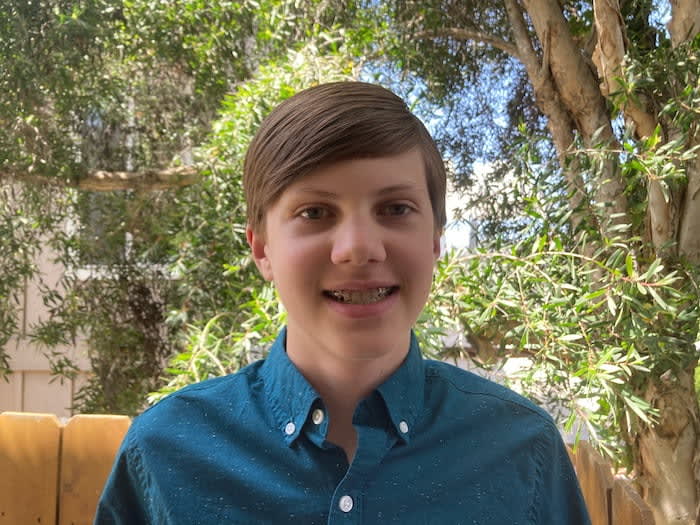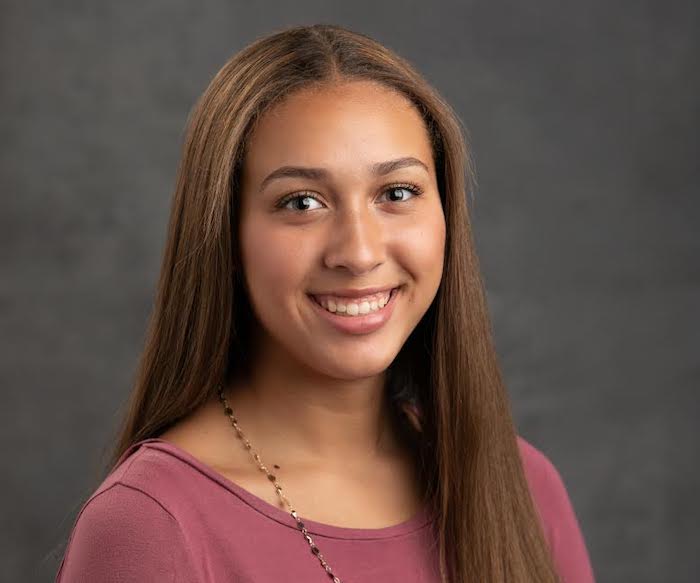During April’s Financial Literacy Month, EVERFI partnered with 47 financial institutions to host the second annual Financial Literacy Bee, a digital learning challenge that enabled high school students to learn about important financial literacy concepts ranging from budgeting and saving to employment and income, investing, and insurance. The challenge drew more than 2,800 student participants!
Students competed to win a total of $20,000 in college scholarships by completing a capstone entry in which they shared a short-term or long-term savings goal and outlined a plan for how to get there.
The first-place essay contest winner was Gissel Zuniga, 17 years old from Milwaukee, Wl who received $10,000 in scholarship funds, followed by second and third place winners Daniel Snow, 14 years old from El Cajon, CA, and Micah Johnson, 17 years old from Grand Blanc, MI, each winning $6,000 and $4,000 in college scholarship funds respectively.
Read more of their inspiring, stand-out entries below, and join us on congratulating these extraordinary students and writers!
First Place: Gissel Zuniga
17 years old, Milwaukee, WI

On my fifteenth birthday, two months before my grandfather passed away, I distinctly remember him whisper in my ear, “enfócate en tus estudios y busca la lucecita en el cielo que siempre va ser tu guía” translating to, “focus on your studies and look for the little light in the sky that will always be there to guide you.” This simple phrase is my inspiration for pursuing my dream of attending Marquette University’s School of Dentistry. Because my grandfather and grandmother spent their entire lives working without an education, I knew achieving this goal was going to be all up to me. However, knowing I had their support along with the full support of my parents, I knew I could get there. In terms of finances, I learned I had a ways to go.
As a junior in high school, I quickly learned that attending a dental school is expensive and that savings are necessary if I wish to continue my education. However, more than a savings account is needed if I wish to dedicate myself to a higher education. After creating my savings account, I learned through JA BizTown what it meant to create a realistic budget for my money and understand the differences between wants and needs.
The EVERFI Financial Literacy Bee has taught me additional investment types that could help me achieve my goal with more attention to my specific needs and timelines. I can apply my newfound knowledge of CDs, bonds, and mutual funds to gain interest on the money I have saved. Furthermore, the correlation between short, medium, and long-term objectives helped me structure the steps and plans I have to actualize my goal of receiving a valuable post-secondary education.
I plan to accomplish my medium-term goal of attending dental school by utilizing my two savings accounts at Educators Credit Union. I will also set aside half of my savings already acquired to store in CDs and bonds as a way to gain interest. As time progresses, my part-time job income will be budgeted strictly using the 50/30/20 rule to minimize my spending on wants vs. needs. Because tuition for colleges has significantly inflated over the past five years, I also recognize that I will need to apply for student loans and various scholarships to help cover my expenses as a student partaking in a health science career. Attaining scholarships is an essential component in this plan because I can focus on paying off fewer loans and avoiding debt.
My goal of having enough money for dental school after college is the first step in a long-term dream of opening my dental practice. By carrying out my medium-term objective, I can give myself the necessary credentials and knowledge I need to succeed. In my eyes, the success I seek is changing lives by transforming smiles to give people confidence in their appearance to pursue their aspirations. With components from various opportunities, like the Financial Literacy Bee, I know I can conquer my dream.
Second Place: Daniel Snow
14 years old, El Cajon, CA

Do you ever watch a superhero or sci-fi film and wonder how filmmakers actually produce all of the eye-popping special effects, explosions, and scary monster moments? Well, the answer is a complicated pipeline of different visual effects (VFX) departments. Trackers, modelers, and compositors are just a few of the different types of specialists required to even pull off a single shot. These artists pour countless hours into their craft. I want to become one of these artists, but I have a problem. My computer is very old and barely has any processing power. I need a better computer in order to create high-level visual effects.
My short-term goal is to save $1,300 in less than a year. I researched the four different short-term savings options taught in the EVERFI Financial Literacy Bee and settled on a savings account because it is intended for infrequent withdrawals and will accumulate interest. I am looking to find a savings account at a bank, credit union, or online bank that offers compound interest because that will help me save money at a quicker rate than a savings account that only has simple interest. In order to accomplish my short-term savings goal, I plan to work as a math tutor. If I charge $15 per hour, I need to work 87 hours to reach my goal. I am also learning how to code, so down the line I can start making and selling video games as well, which will speed up the savings process.
Once I purchase my new computer, I can start making even more money. With my increased processing power and skill, I can take art commissions from companies and also continue my game development pursuits. In the future, I want to obtain a film degree at a university in Los Angeles. This will allow me to pursue my current hobbies professionally as a VFX artist. By then, I hope to be financially successful in managing and saving money due to the skills I have learned from the EVERFI Financial Literacy Bee.
Third Place: Micah Johnson
17 years old, Grand Blanc, MI

I have been inspired from a young age to pursue my passions in medicine, as I come from a proud family full of women in medicine. Ever since I was a little girl, I would spend every Christmas party listening to my aunts and mother describe every gory detail of the crazy patient stories or medical miracles that they experienced. After the little ones opened their presents, all the ladies would gather around the dinner table ready to begin a long night of story-telling, and I would trail right behind them. Pretty soon, I was able to understand the medical terminology they were using and could chime in to express my curiosity (or, in some cases, disgust). Our tradition excited me for the future to come, and I long for the days where I can contribute my own stories to the table, joining the league of strong, powerful women. So, in terms of monetary goals I have in mind for saving, there is no doubt in my mind that I will utilize my plan to work towards becoming a physician.
In achieving my medium-term goal to save money for the many educational expenses that develop with becoming a doctor, I found a tool similar to the 50/20/30 rule that Nasira used from the modules. However, since I only work part-time at my local pizzeria, I felt that I could modify this rule to fit with my plan. A feasible goal that I created with my wage in mind would be to save $16,000 by working four days a week every summer when I am home from college. Instead of using the traditional 50/30/20 rule, I want to allocate 50% of each paycheck (which would be $200) to my savings account. As I learned from the module, this will also accumulate a small amount of interest over time. Another 30% of my paycheck ($120) will go towards my “wants,” and any left over that I don’t use will be placed into my savings account. The last 20% of my check ($80) will then go towards my “needs.” Since I still live with my parents, I am not responsible for any bills or other expenses besides my own gas money, so I will be able to manage with a smaller amount of money towards my needs. From my savings portion, $200 from every paycheck multiplied by the number of weeks in the summer (20) would bring me to $4,000 a year. This multiplied by the four summers that I will be home to work will put me at my goal of $16,000.
All in all, the modules provided by the EVERFI Financial Literacy Bee have helped me put into perspective how big of an investment college can be. Being able to learn about the different saving tools and going through the examples of Nasira, Ryder, and Ameera has ultimately made me less anxious about planning and saving money in the future.
